Lets say our pattern is a regex for capital letters (but we could have a more complex pattern than searching for capitals)
To find at least n consecutive patterns (in this case, the pattern we are looking for is simply a capital letter), we can do this:
(Using Ruby)
somestring = "ABC deFgHij kLmN pQrS XYZ abcdEf"
at_least_2_capitals = somestring.scan(/[A-Z][A-Z]+/)
=> ["ABC", "XYZ"]
at_least_3_capitals = somestring.scan(/[A-Z]{3}[A-Z]*/)
=> ["ABC", "XYZ"]
However, how do I search for at most n consecutive patterns, for example, at most one consecutive capital letter:
matches = somestring.scan(/ ??? /)
=> [" deFgHij kLmN pQrS ", " abcdEf"]
Detailed strategy
I read that I need to negate the "at least" regex, by turning it into a DFA, negating the accept states, (then converting it back to NFA, though we can leave it as it is) so to write it as a regex. If we think of encountering our pattern as receiving a '1' and not receiving the pattern as receiving a '0', we can draw a simple DFA diagram (where n=1, we want at most one of our pattern):

Specifically, I was wondering how this becomes a regex. Generally, I hope to find how to find "at most" with regex, as my regex skills feel stunted with "at least" alone.
Trip Hazards - not quite the right solution in spirit
Note that this question is not a dupicate of this post, as using the accepted methodology there would give:
somestring.scan(/[A-Z]{2}[A-Z]*(.*)[A-Z]{2}[A-Z]*/)
=> [[" deFgHij kLmN pQrS X"]]
Which is not what the DFA shows, not just because it misses the second sought match - more importantly that it includes the 'X', which it should not, as 'X' is followed by another capital, and from the DFA we see that a capital which is followed by another capital is not an accept state.
You could suggest
somestring.split(/[A-Z]{2}[A-Z]*/)
=> ["", " deFgHij kLmN pQrS ", " abcdEf"]
(Thanks to Rubber Duck)
but I still want to know how to find at most n occurrences using regex alone. (For knowledge!)